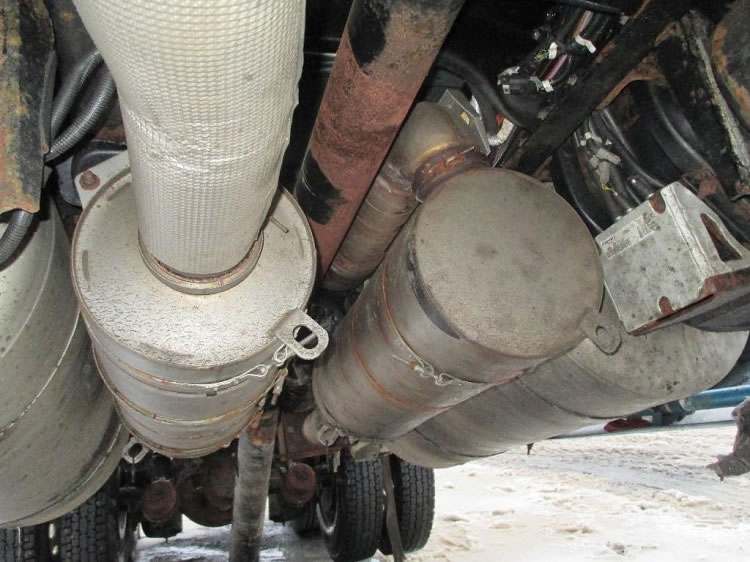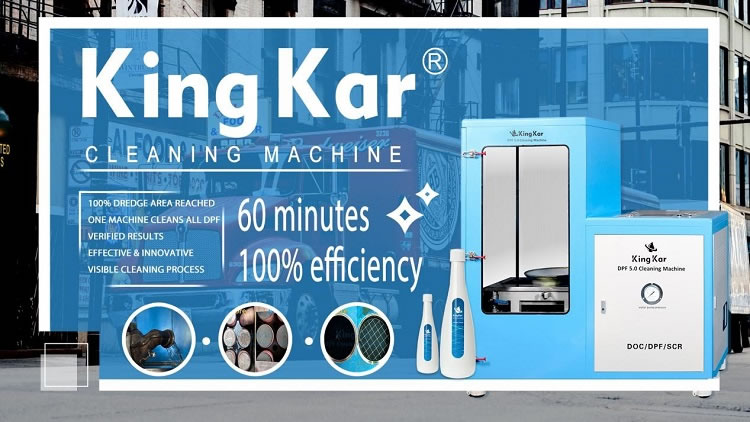The importance of cleaning diesel DPF
Diesel engines have the advantages of low speed, high torque, high thermal efficiency, low fuel consumption, and good durability. However, in order to make high-pollutant diesel engines emit clean exhaust gas, the surrounding filtering and pollution reduction auxiliary systems are better than gasoline engines Many more, these systems also need to be cleaned during maintenance. Once the system is blocked, it does not cost tens of thousands of dollars, but the car cannot be redeemed.

The hero of the end of black smoke DPF carbon particulate filter
The author first introduces what is a DPF system. Diesel engine pollutants that will cause environmental impact include CO, HC, CO2, NOx, and PM. However, since diesel engines have lower emissions for the first two, only the latter three need to be controlled. Especially PM, also known as “suspended particles”, is the easiest to notice because it is the main source of exhaust black smoke. PM is mainly caused by the incomplete combustion of diesel. After adding a high-pressure common rail direct injection system to improve combustion efficiency, although it can effectively reduce the production of carbon particles, it is still It is difficult to avoid black smoke from the exhaust pipe. Because suspended particles will increase the amount of dust in the atmosphere, it is harmful to the human respiratory organs and even has the risk of causing cancer. Therefore, the European Union is based on the consistent principle of maintaining the quality of life and occupying the European market for diesel vehicles. With the steadily increasing rate, stricter emission standards have been formulated. Therefore, the new generation of diesel vehicles will have an additional DPF carbon particulate filter in the middle of the exhaust pipe.
The inside of the DPF is a honeycomb ceramic structure, which contains many parallel and adjacent filter layers. The gas can pass through, but the larger carbon particles will adhere to the filter layer wall, which can reduce the black smoke of the exhaust pipe. The situation arises.
The special honeycomb structure intercepts carbon particles in it
The detailed structure of the DPF is like a honeycomb ceramic structure, including many parallel and adjacent exhaust gas inlet channels and exhaust gas outlet channels. The exhaust gas inlet and outlet channels are separated by a filter layer wall. The layer is composed of pores for gas flow. The exhaust gas flowing through will convert toxic gas into harmless gas like a traditional catalytic converter. As for the larger carbon particles, they will adhere to the wall of the filter layer. Above, this carbon emission process is also called Passive Regeneration, which can greatly reduce the carbon particles emitted into the atmosphere, but because carbon particles will continue to accumulate on the wall of the filter layer when the accumulation density reaches a certain level, The system will start Active Regeneration.
Through the above process, the carbon particles originally accumulated in the DPF can be burned into carbon dioxide and discharged into the atmosphere, so that the DPF can continue to serve. It is worth mentioning that the processes mentioned above are all in the most ideal state. Because DPF needs to perform active and passive regeneration processes, it needs to have certain driving conditions before it can proceed. Therefore, improper usage habits or environment, such as the number of times of running the highway in half a year, is 3 times. The following, the use of diesel oil of unknown origin, and the use of engine oil of inconsistent specifications, etc., may cause the DPF to block and malfunction. Also because the active regeneration process needs to meet special conditions to operate, instead of passively waiting for the engine to clean the DPF, it is better for the owner to take the initiative to clean the vehicle during vehicle maintenance to prevent DPF blockage in advance.
If you want to know more about the DPF cleaning machine, welcome to contact KINGKAR!

